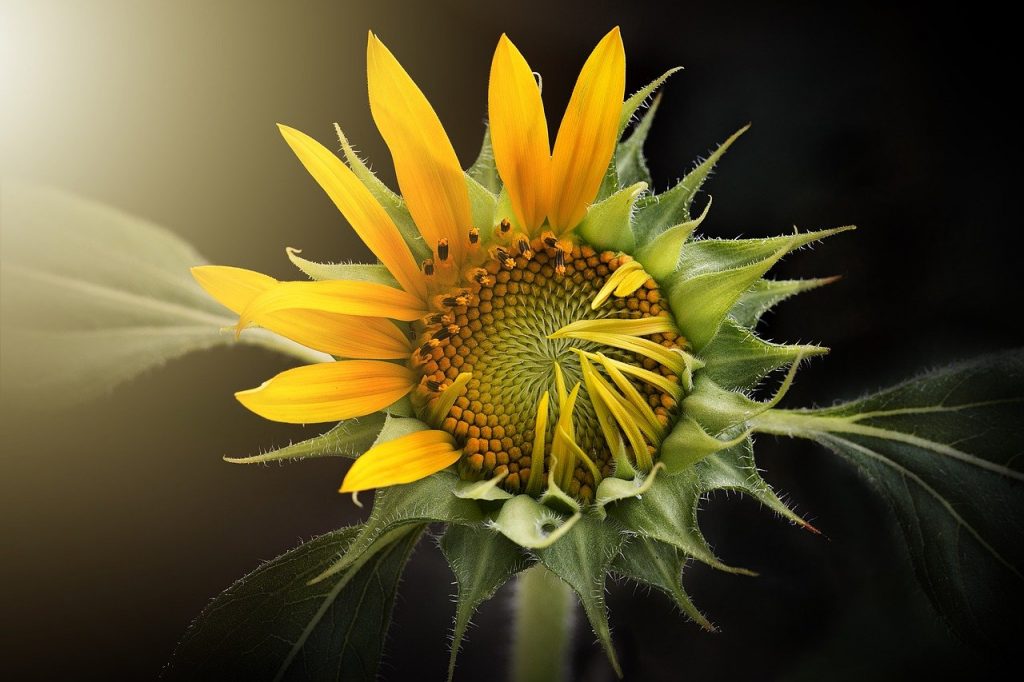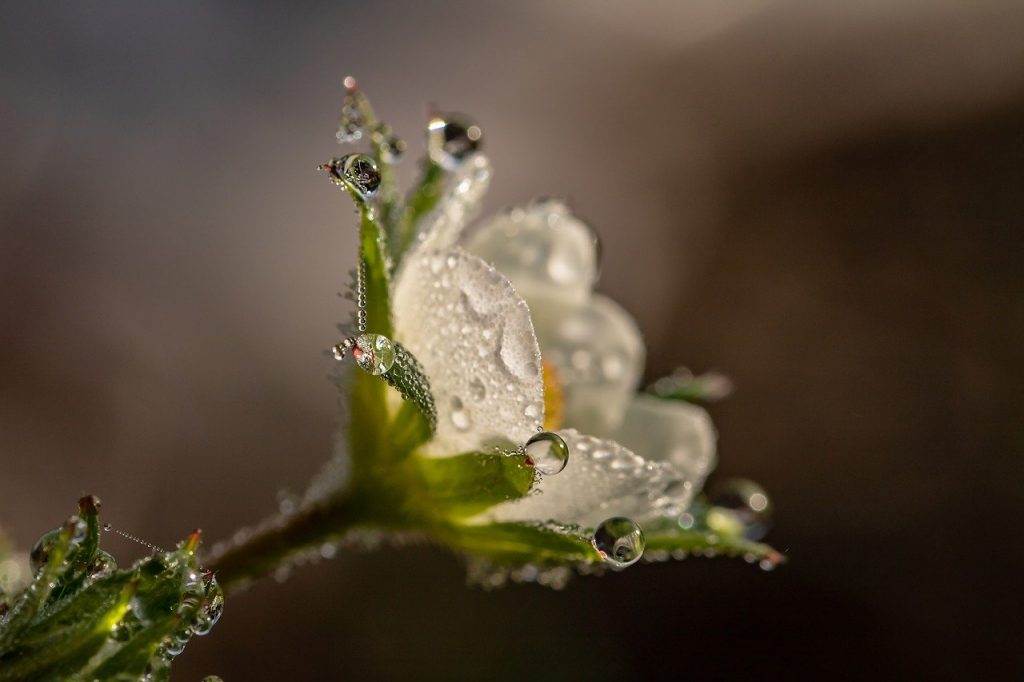Tips for Macro Flower Photography
Estimated reading time: 9 minutes
Table of contents
Scientists estimate that there are approximately 400,000 flowering plant species on the planet. They are thought to have played an important role in the evolution of many species, including ours. They can be found on every continent, with two species even found in Antarctica! And each of them has distinct shapes, textures, and colors that make them excellent photographic subjects.

Flowers are excellent subjects for photographers who want to hone their macro photography skills. Because of their accessibility, you won’t have to travel far to find a subject. Your backyard garden will suffice, but here are seven macro flower photography tips to help you capture stunning flower images:
Use a Tripod

If there is one rule for flower photography, it is to always use a tripod. Shooting without a tripod is simply too unsteady, as even minor movements will result in blur. You’ll have enough trouble keeping your subject steady as even a slight breeze can blur your image, so don’t complicate matters by taking hand-held macro photos. Using a tripod will also force you to slow down and take your time composing the shot.
Using a wired cable shutter release or a wireless trigger in conjunction with the tripod will allow you to take the shot without touching the camera. If you don’t have either, you can use your camera’s self-timer to take the shot, but make sure it’s set to 2 seconds rather than 10 seconds or you’ll feel like it’s taking forever.
Equipment
As with any job, having the right tools is half the battle. The selection of camera equipment is a personal one, but there are some general guidelines that can assist you in determining what works best for you. You’ll need a camera body, a macro lens, a light diffuser, a reflector, and a tripod at the very least. That may appear to be a large sum, but it is not.

For light reflectors and diffusers, use a couple of pieces of white and wax paper. If you use a lightweight tripod, all you need is your camera, a macro lens (usually a 100mm macro lens), and possibly an infrared (IR) wireless shutter release or a trigger cable. The camera (with lens) will most likely be the heaviest part of your equipment.
Minimizing your equipment will help to lighten your load on long nature walks, but if you want to bring more, a Clamp may be just what you need. A clamp, or plant clamp, is made up of two clamps on either end of an articulating arm, but it doesn’t have to be expensive. You can even make your own.
The goal is to have it stabilize your subject, which in this case is a flower stem. Two small to medium-sized clamps and approximately two feet of flexible wire will suffice. One clamp is secured to a tripod leg or another sturdy feature, such as a small tree. The other clamp is attached to the flower’s stem, but make sure to use some foam material inside the clamp to prevent the stem from being crushed. You might want more than one of these to hold things like your light diffuser or reflector or to keep other items out of the shot.
Planning
You’ll want to think about the weather and the best time of day for your shoot. The light is softer in the early morning and late afternoon than it is in the middle of the day, but it is warmer at the end of the day. It really depends on what you want to achieve, but these are things to think about so that you’re properly prepared.
Winter photographs of flowers covered in raindrops are just as lovely as springtime blooms in the sun. It all depends on the atmosphere you want to set. By spritzing the flowers with water, you can also create specific conditions for the shoot. This cleans the flower while also creating interesting beads on the petals. It’s a simple way to set the mood that only requires a little forethought.
Composition

You’ve arrived at the subject after all of your preparation and with your equipment in hand. You’re all set to start shooting. However, before you begin, you must consider the composition of your shots. By offsetting your main subject and making good use of negative space, you can create an interesting image by following the rule of thirds.
You should also think about the angle of your shot. You could, for example, shoot down inside the petals. By increasing the magnification, you can create a true abstract work of art rather than just a photograph of a flower.
Light Control

One of the most important considerations for flower macro photography is light control. While you can’t control the sun or the clouds, you can reflect or diffuse the light that is available. If you don’t have a camera reflector kit, you can use something as simple as a white sheet of paper or foam board to reflect light and translucent wax paper to diffuse it, creating a softer light.
If natural light isn’t enough or isn’t quite right, you can use artificial light to improve the shot. LED lighting has replaced incandescent lighting as the primary source of continuous photographic lighting. For macro photography, two small LED bulbs mounted to the top of your camera on articulating arms will allow you to apply precise light spots, adding texture and volume to your flower shots.
If LED lights are insufficient, flash lighting can be used. It’s more powerful and usually overpowers natural light, but it allows you to freeze movement and create images that would otherwise be impossible in low-light situations.
Camera Settings – Depth of Field and Shutter Speed

Controlling the distance between the closest and farthest objects in focus in your scene can aid in the creation of a unique and interesting image. With a shallower depth of field, for example, you can achieve better background separation and a cleaner composition. To accomplish this, experiment with your f stops to see which works best for your specific shot.
Because you are so close to your subject, you should usually stop down your lens (increase the aperture number) to f/11, f/16, or even f/22. To compensate for the smaller lens opening, you will usually need to lower your shutter speed or increase your ISO–i.e., your camera’s sensitivity to light.
Your shutter speed, on the other hand, is critical for freezing the action. Even if there doesn’t appear to be much action, even a slight breeze can cause your image to blur. As a result, you may need to experiment with the settings to find the sweet spot for your specific scene. As a result, it’s also a good idea to use live view, which allows you to see the image on your LCD screen before you shoot.
It might even be worth it to back up a little and crop the image in closer in post-production. Modern digital cameras’ megapixels allow for aggressive cropping without sacrificing image quality.
High Dynamic Range (HDR)

Sometimes, no matter what you try, you just can’t get the right exposure, and your camera can’t either. That’s where HDR photography comes in. It’s a feature that instructs the camera to take three, five, seven, or even nine images at different exposures. The images are then blended together in post-production. If done correctly, the resulting image will have perfect exposure and it will be impossible to tell that HDR was used.
The technique has been criticized, primarily because it can be overused and the resulting images do not appear natural. However, if used correctly, this technique can be a great tool for giving you more flexibility in certain situations.
Flowers are one of the most beautiful and fascinating macro photography subjects, and while it may appear to be a simple shoot, not all flower photographs are created equal. Some of the challenges that can affect your images, such as breezes, may go unnoticed by you. And, as with any subject, there are hints and techniques for capturing the best images possible.

Some of those suggestions rely on your creativity and ability to plan in order to achieve the desired image. It is critical to have the proper equipment, such as a tripod and light reflectors/diffusers, in order to create good macro images. However, your creativity in composing your shots and adding details (such as water beads) is also important. You should also be familiar with the camera’s settings.
Changing the depth of field and shutter speed will allow you to create more interesting images. Using reflectors/diffusers and even artificial light to control the light will add texture and volume to your flower photographs.
Finally, understanding how to properly apply new techniques, such as HDR photography, gives you an advantage when it comes to capturing a macro shot as beautiful as the flower itself.
Note: If you want to make some adjustments to the photo just let me know. I can do it for you at a very low cost. You can hire me to edit your photo.
latest post
- Company Profile WritingUncover the essential components of a company profile. Our guide covers how to write about your mission, history, and contact details to showcase your business effectively.
- What is CashKaro and How to use CashKaro cashback app?Discover CashKaro and transform your online shopping! Learn how to earn cashback effortlessly with the CashKaro app. Start enjoying discounts today!
- How to Make a Graphical Abstract?Elevate your research presentation with our guide to crafting compelling graphical abstracts. Discover essential tips on visuals, clarity, and effective design.
- Best AI tools for Facebook AdsIf you’re seeking to improve your Facebook advertising strategies, Birch or Revealbot, AdEspresso by Hootsuite, and Zalster are exceptional AI tools that enhance efficiency and maximize ad performance.
- Photo Editing MistakesExcessive editing, Oversaturating colors, Blurred images, Too much HDR and Overdoing filters and effects are some of the top photo editing mistakes to avoid for crafting stunning pictures.













